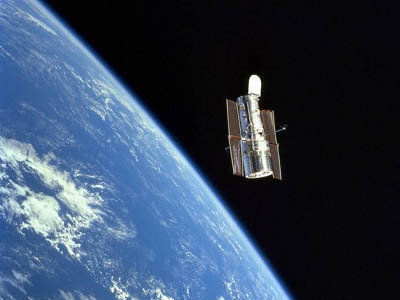
I’m always surprised when a longtime local says, “Huh?” at the mention of the Lockheed-Martin facility up on the Ben Lomond Mountain ridge above Boulder Creek. But even those of us who are aware of it tend to forget about the world’s largest defense contractor in our midst.
Many in the media referred to the big wildfire above Bonny Doon last August as the Lockheed Fire, but the connection was largely lost even then. That’s because the company has intentionally kept a relatively low profile since it acquired nearly 5,000 acres at the end of Empire Grade in the 1950s. (It wasn’t the end of the road then — Empire Grade continued another 11 miles, providing access to Big Basin.)
California-born Allan Loughead (who later changed the spelling of his name to Lockheed) was one of this country’s earliest aviation pioneers, starting the Alco-Hydro Aeroplane Co. of San Francisco in 1913, so-named because funding was borrowed from the Alco Cab Co. of the same city. There were bumps along the way, but the two World Wars helped Lockheed stay among the airplane designers and manufacturers that succeeded and grew.
On May 25, 1961, President John F. Kennedy committed the United States to the exploration of space and the landing of a man on the moon, giving new life to aviation engineers and firms struggling to stay afloat after massive spending cuts at the close of World War II. Lockheed was well positioned to flourish (as was Martin-Marietta, the competitor it would later merge with).
In 1957, before President Kennedy’s promise was realized, the Soviet Union launched the world’s first orbiting satellite. The “commies” had beat us into space, and the military was quick to exploit fears of a “technology gap.” The National Aeronautics and Space Administration was created the next year, to enhance our scientific and military position in the “space race.” Since then, Lockheed has been the primary contractor in virtually all of NASA’s major projects.
Activity seems significantly reduced in recent years, but the Empire Grade facility was Lockheed’s primary missile test site for well over a decade. Rockets and missiles ranging from the Gemini space explorers to Trident military surface-to-air weapons and submarine-launched Poseidon missiles were developed and tested there. The military and weapons projects have always been the target of local activists, and there have been a number of significant demonstrations at the gates. Environmentalists have issues, too, with the suspicion of egregious pollution bolstered by Lockheed’s refusal to allow any soil or well testing on or around the property.
But few can argue with the role played by the local Lockheed site in the building and integration of the Hubble Space Telescope. Last month, the “eye in the skies” ’scope marked its 20th anniversary in orbit, and the payoff has been staggering. The value of scientific data we’ve gained is incalculable and will remain so for decades. After a bit of a rocky start, Hubble has proved the existence of dark matter, given us invaluable insight into the life of supernovae, both confirmed and created numerous scientific theories, and sent back stellar photographs that even we dunderheads understand are a window onto the creation of the cosmos.
Primarily designed and engineered in Sunnyvale, much of Hubble’s testing and assembly took place here in the ’hood.
It didn’t start out well for Hubble, though. Not everyone in the astronomical community thought the project was a good idea, and, when it went ahead, there was competition for and dissention about the funding. Then, after the telescope was put into orbit, we learned that the lenses had been ground to specifications measured in millimeters rather than inches. That little slip made 80 percent of the image area out of focus.
But a shuttle mission repaired the lenses, and now Hubble sees so far into space, with such clarity and detail, that the pictures it returns can literally serve as art objects. More to the point, astronomers now have to compete with a long list of other scientists to run their projects. The darn thing works.
I would encourage you to check with the Santa Cruz Astronomy Club for the real lowdown on just what a fabulous use of public funds the Hubble Space Telescope has been. They can also explain and enumerate how you, as an individual, benefit from what has been learned from Hubble. They’re local folks who take the stars out of the heavens and the scientific enclaves to bring them to your neighborhood.
The club also has frequent public activities, with the goal of making astronomy less of a mystery and more of a wonder. Club members supply the telescopes — and the emphasis is always on family participation and enjoyment. Check with County Parks for events near you, or with the club at http://astronomy.santa-cruz.ca.us.
Steve Bailey of Boulder Creek has spent plenty of time in recreational activities. Contact him at sb*****@****io.com.











